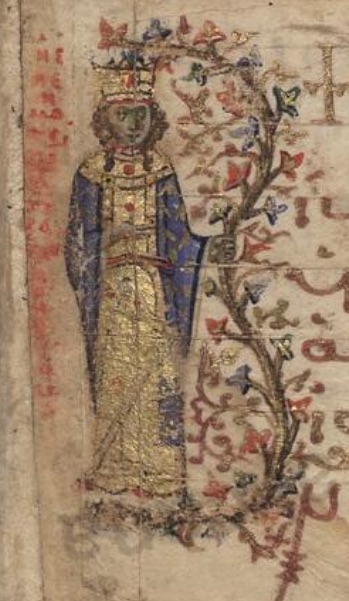 The book is small - 7.25 x 4.75 inches. The surface has been coated with a chalky white ground and the paint is laid on extra thick. It is inscribed "May this manuscript, prepared for the family of the Emperor of the Romans, continue to bless the kingdom of God," and is believed to date to 1122. It is described in the catalog of the Vatican Library as MS Urbinate Gr. 2.
The book is small - 7.25 x 4.75 inches. The surface has been coated with a chalky white ground and the paint is laid on extra thick. It is inscribed "May this manuscript, prepared for the family of the Emperor of the Romans, continue to bless the kingdom of God," and is believed to date to 1122. It is described in the catalog of the Vatican Library as MS Urbinate Gr. 2.
It seems to have passed through Egypt during its early life after it left Constantinople from the Coptic notes that have been added.
It belonged to the Duke of Urbino before entering the collection of Clement VII (1523-1534) and has been in the Vatican Library since that time. This manuscript is considered to be one of the most important Greek New Testaments to have survived. Everything about it points to the quality of the production of the text and its illustrations.
This Bible was read everyday to the Komnenos family using a pointer to follow the text. They would have also used it privately. In 1122 there were the two parents, their eight children and their husbands and wives. That's a big family. Eirene, the wife of John II, and the wives of his two sons, Alexios and Andronikos were all Greek scholars in their own right. One of them was an expert in medicine whose writings still survive. John's fourth son, Manuel, who succeeded him on the throne was an expert in medicine, set the broken bones and created his own medicines. All of John's boys were trained in field hospitals on campaigns and were military-trained from a young age. Virtually the whole family traveled with John on military campaigns He built a special "field-palace" on the coast of Asia Minor where they they lived for long periods of times.
Above is a close-up of a portrait of John's wife Eirene, who came to Constantinople as a Princess of Hungary named Piroska. She bore eight children for John, four girls and four boys. As you can see she was blond. This crown exactly matches the one in her beautiful mosaic in Hagia Sophia. The gospels where made in the Imperial scriptorium, probably located by the Nea Church on the grounds of the Great Palace. There are other manuscripts created in the same workshop, among them the famous Kokkinobaphos Homilies on the Life of Mary, the Codex Ebnerianus, a New Testament in the Bodleian Library and was also still in Constantinople in the 17th century. It was created for Manuel I's uncle, Isaac Komnenos, who was one of the founders of the Chora Church. His portrait appears in it. Another manuscript from the workshop is the Gospel Book of Theophanes in Melbourne, Australia.
The inscription of her name and title on the left was effaced when the pages of the gospel were remounted in a new book. Perhaps the vine she holds is a symbol of the many children she bore.
The two virtues who stand on either side of Christ behind the throne are on the left, Eirene, the wife of John, and on the right, the wife of Alexios who was also named Eirene. She was originally Dobrodjeja, a Russian princess, who changed her name when she married him. She became a great scholar in Russia and wrote books on medicine. They both wear the crown of an Empress.
In the blow-ups of the evangelists (several times their actual size) you can see the writing tools and desks of the three seated scribes are all different and have tiny tools on their desks. Matthew is dipping his long pen into a vessel of ink. All of the desks have arm stands in the shapes of dolphins.
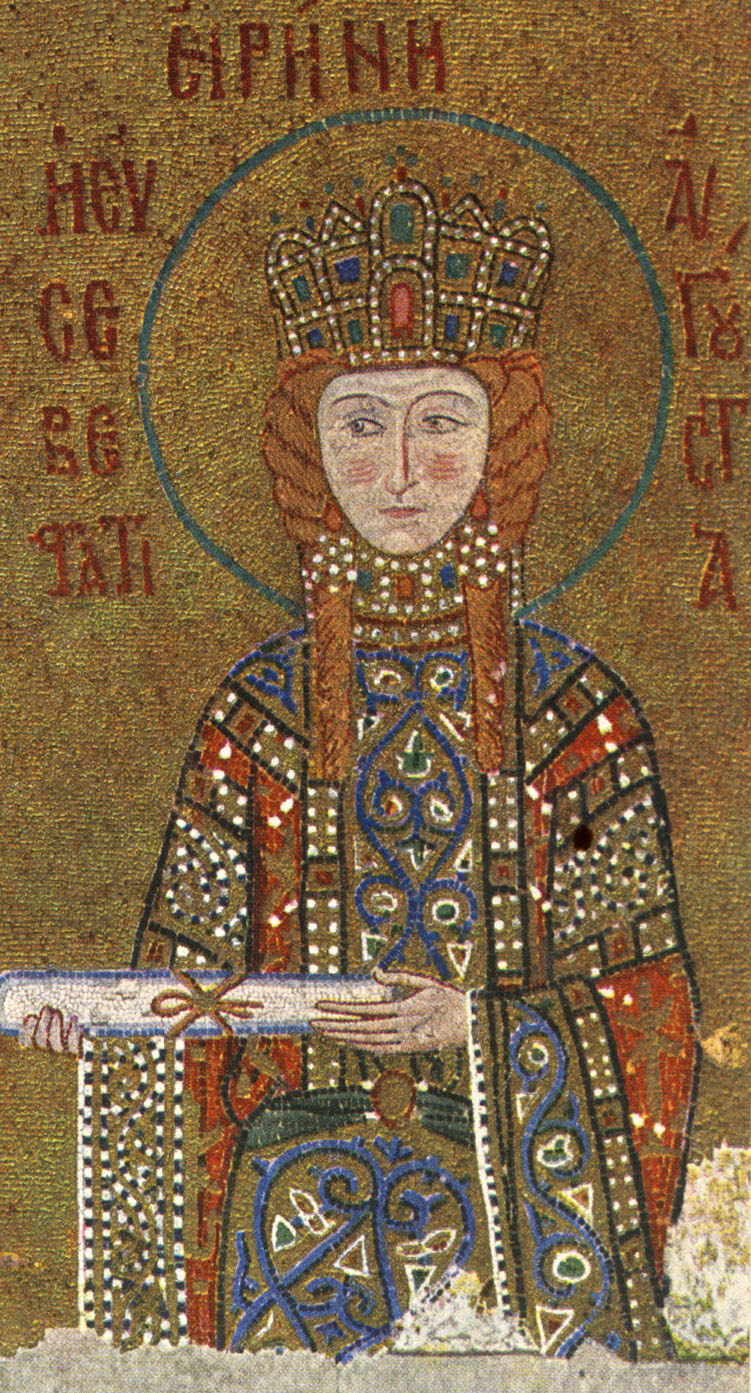 It possible the same workshop was involved in the design of her mosaic in the South Gallery of Hagia Sophia. It is called the family gospels because it was expressly made for John as deluxe family edition. There is a special illustration of the Nativity of John the Baptist that was included because the gospels were made for his namesake, the second emperor of the Komnenian dynasty. It's possible it was produced for his son Alexios who used it as his personal New Testament. The Gospels were in Greek, unlike the Roman Church whose gospels were in Latin and incomprehensible to the common man or women, all literate Byzantines had direct access to the Gospels.
It possible the same workshop was involved in the design of her mosaic in the South Gallery of Hagia Sophia. It is called the family gospels because it was expressly made for John as deluxe family edition. There is a special illustration of the Nativity of John the Baptist that was included because the gospels were made for his namesake, the second emperor of the Komnenian dynasty. It's possible it was produced for his son Alexios who used it as his personal New Testament. The Gospels were in Greek, unlike the Roman Church whose gospels were in Latin and incomprehensible to the common man or women, all literate Byzantines had direct access to the Gospels.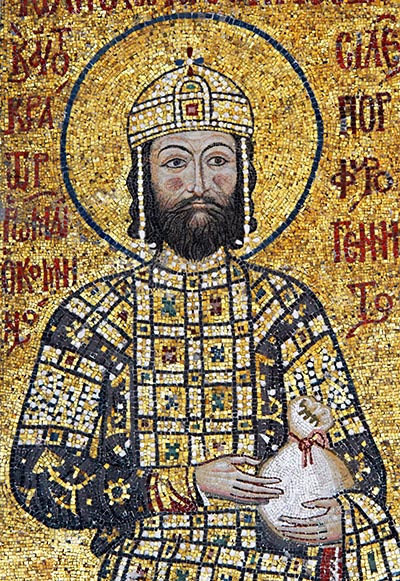 John was very devout and believed he was chosen by God to serve and emperor. His primary responsibility was to protect the people of the empire and defend the church of Christ from all enemies. He took this role very seriously. The throne was a terrible responsibility and an impossible weight for any man to bear. He was assassinated - poisoned - by Crusader allies.
John was very devout and believed he was chosen by God to serve and emperor. His primary responsibility was to protect the people of the empire and defend the church of Christ from all enemies. He took this role very seriously. The throne was a terrible responsibility and an impossible weight for any man to bear. He was assassinated - poisoned - by Crusader allies.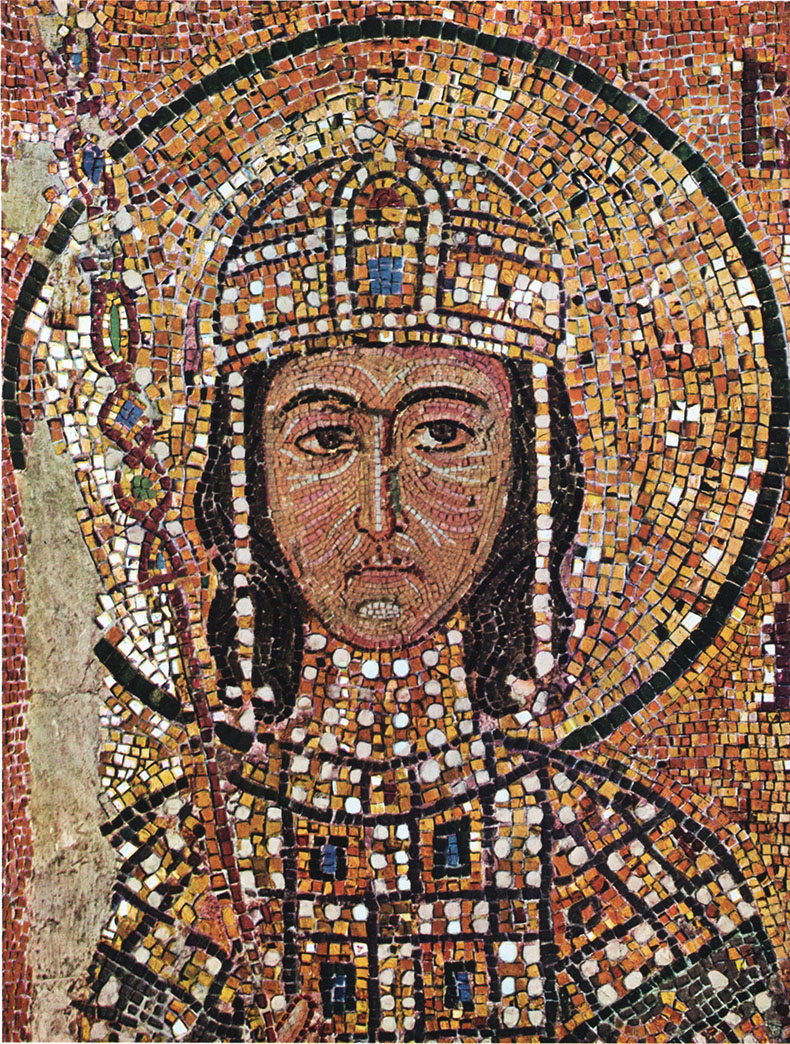 Alexios served as co-emperor with his father. Here is his portrait from Hagia Sophia. His crown is different than his father's. This mosaic and the manuscript have the same crown which was most likely made for his coronation. Alexios died before his father of some virus, his brother died of the same virus while he was taking the body of Alexios back to Constantinople to bury him in the Pantokrator Monastery. Alexios had spent most of his life on campaign with his father and traveled all over the empire. John II took his sons with him everywhere he went. This gospels went with them. As mentioned earlier, in the Renaissance the book was the prized possession of the Duke of Mantua.
Alexios served as co-emperor with his father. Here is his portrait from Hagia Sophia. His crown is different than his father's. This mosaic and the manuscript have the same crown which was most likely made for his coronation. Alexios died before his father of some virus, his brother died of the same virus while he was taking the body of Alexios back to Constantinople to bury him in the Pantokrator Monastery. Alexios had spent most of his life on campaign with his father and traveled all over the empire. John II took his sons with him everywhere he went. This gospels went with them. As mentioned earlier, in the Renaissance the book was the prized possession of the Duke of Mantua.
The scene of the baptism is interesting because it shows a scene of naked swimmers in the river Jordan. John and his sons would have regularly swam in the rivers and lakes of Asia Minor and Thrace and this illustration was included to remind them of it.
The book is lavishly painted with lots of blue pigment made from Lapis Lazuli and includes ornate ornamental patterns of flowers and vines. These are both signs of the Kokkinobaphos scriptorium.
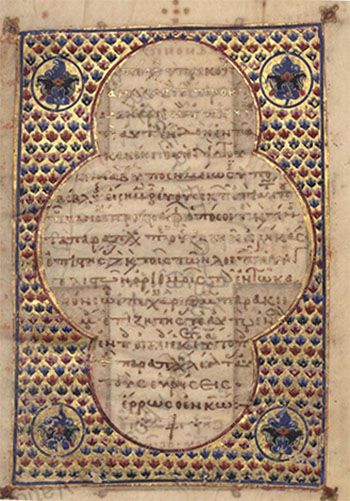
Below is a group of Komnenian imperial princesses from the Homilies on the Life of Mary, including John II's wife Eirene on the far left. In the middle are the wives of the two brothers Alexios and Andronikos. On the far right is probably Irene Doukaina, the wife of Alexios I. Below it is an image showing from the left, Alexios I, Isaac I, Alexios, co-emperor (in the center) and son of John II (shown last) - all members of the Komnenian dynasty.
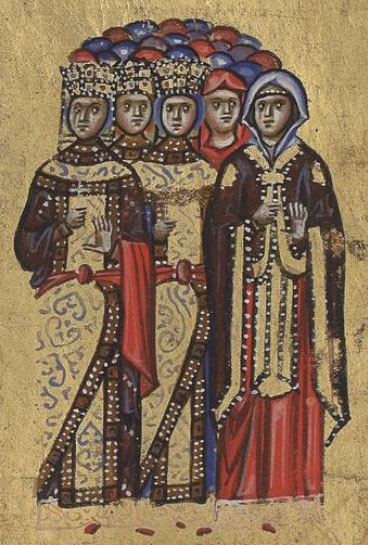 Eirene is described in poetry of the time as “mistress of the Muses and Muse Kalliope,” “lustrous child of Hermes,” and “sweet-singing Siren".
Eirene is described in poetry of the time as “mistress of the Muses and Muse Kalliope,” “lustrous child of Hermes,” and “sweet-singing Siren".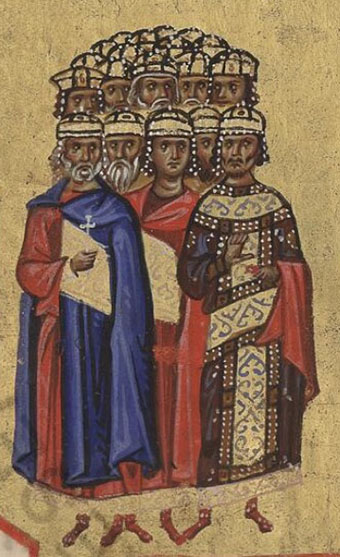
Collections of Beautiful Icons
 click here for icons of christ
click here for icons of christ
 click here for icons of the theotokos
click here for icons of the theotokos
 click here for icons of angels
click here for icons of angels
 click here for icons of saints
click here for icons of saints

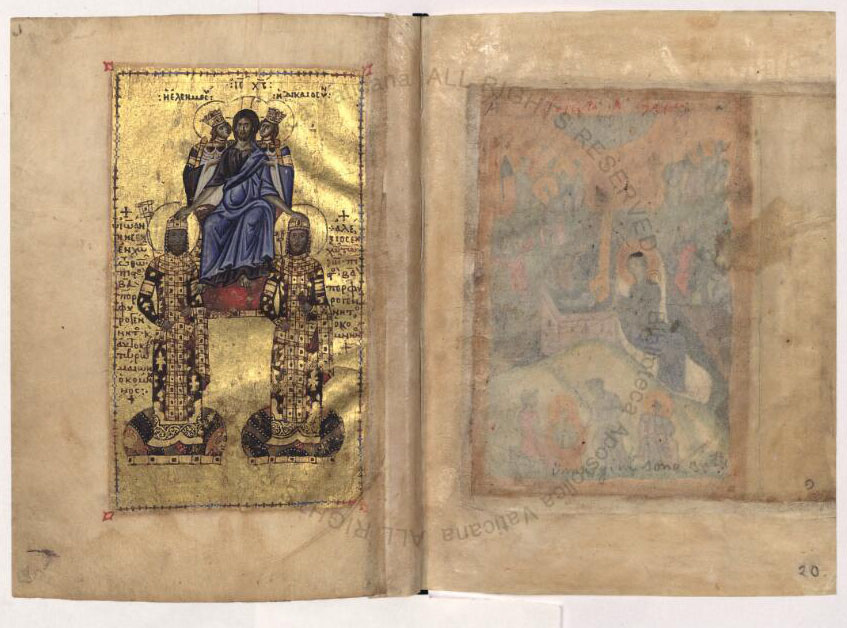 The first two pages, you can see the Nativity through the parchment
The first two pages, you can see the Nativity through the parchment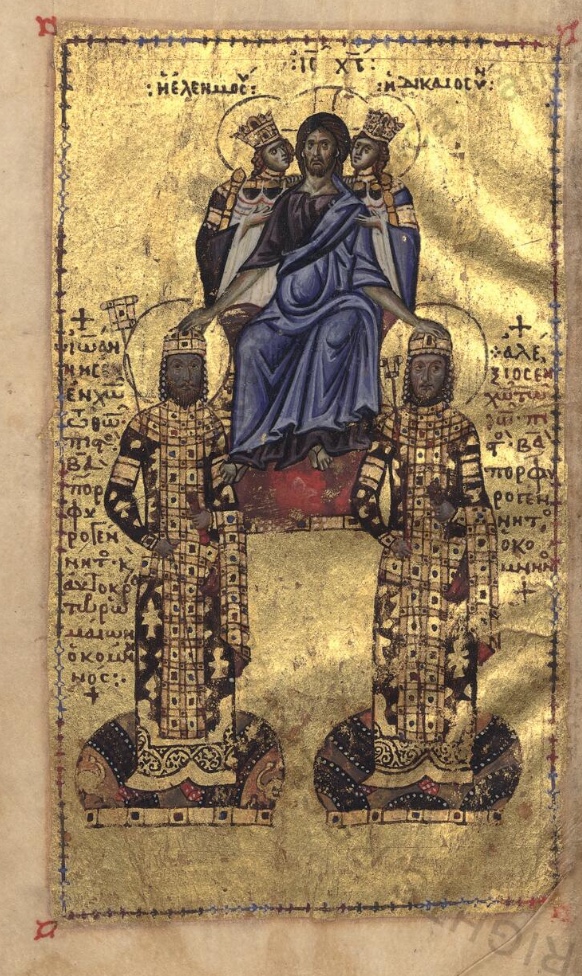 Christ crowns John and his son Alexios
Christ crowns John and his son Alexios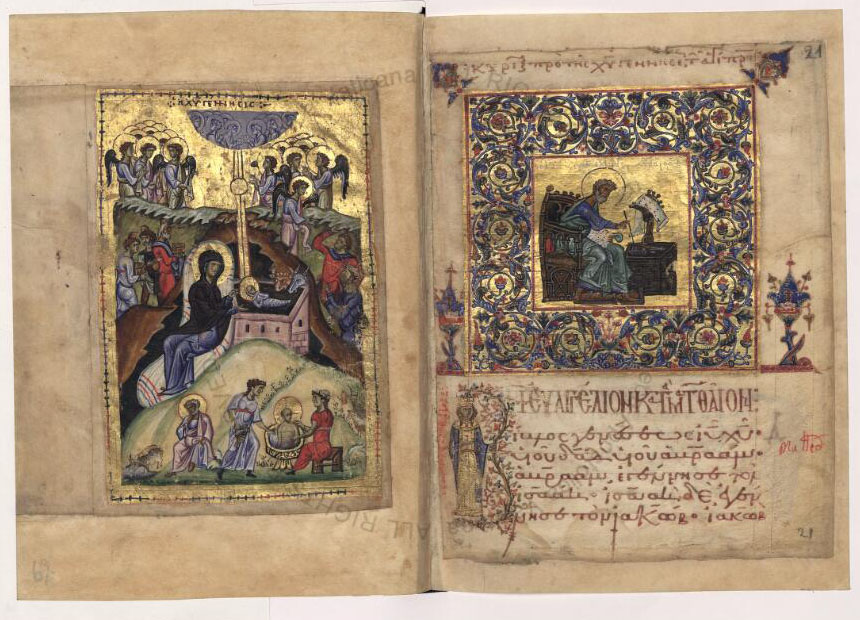
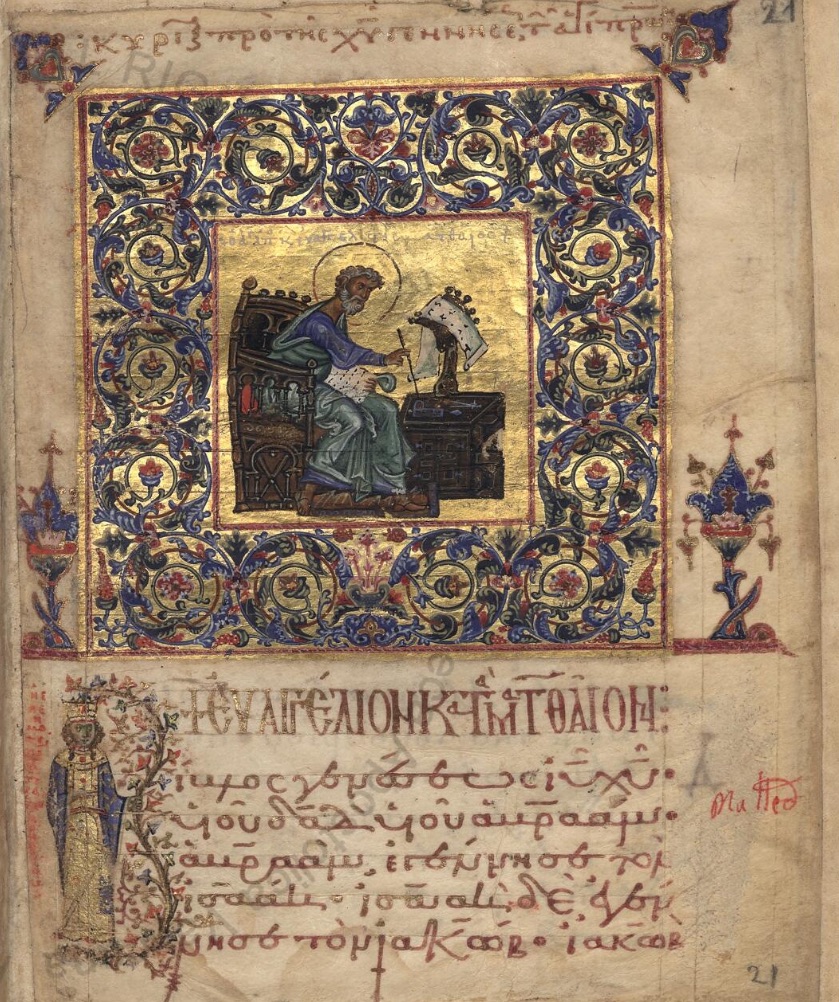
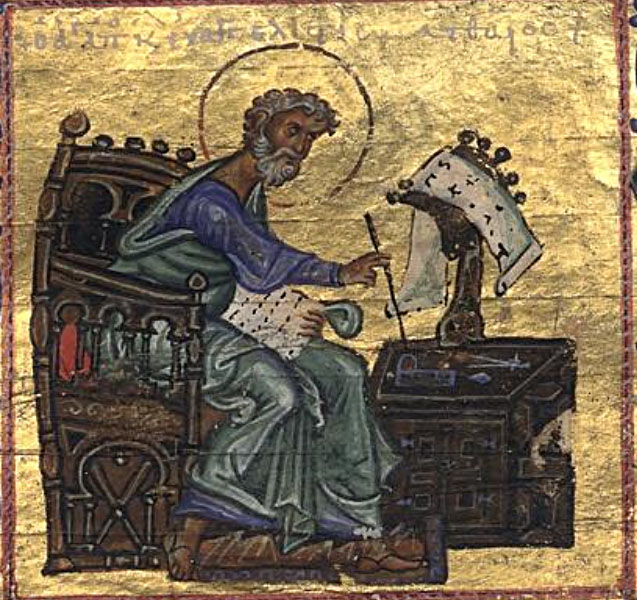
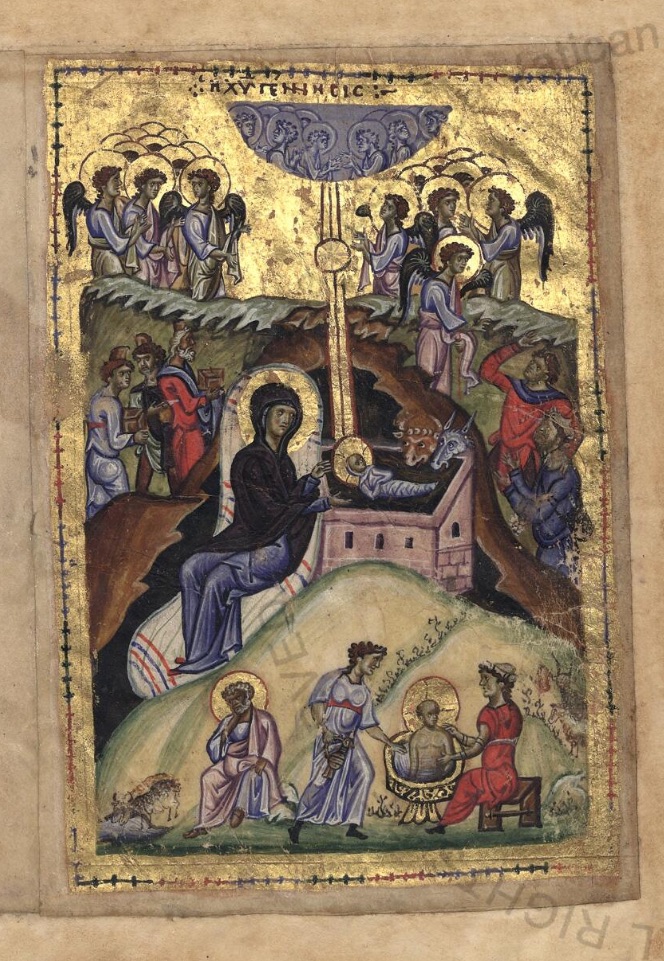 The Nativity of Christ
The Nativity of Christ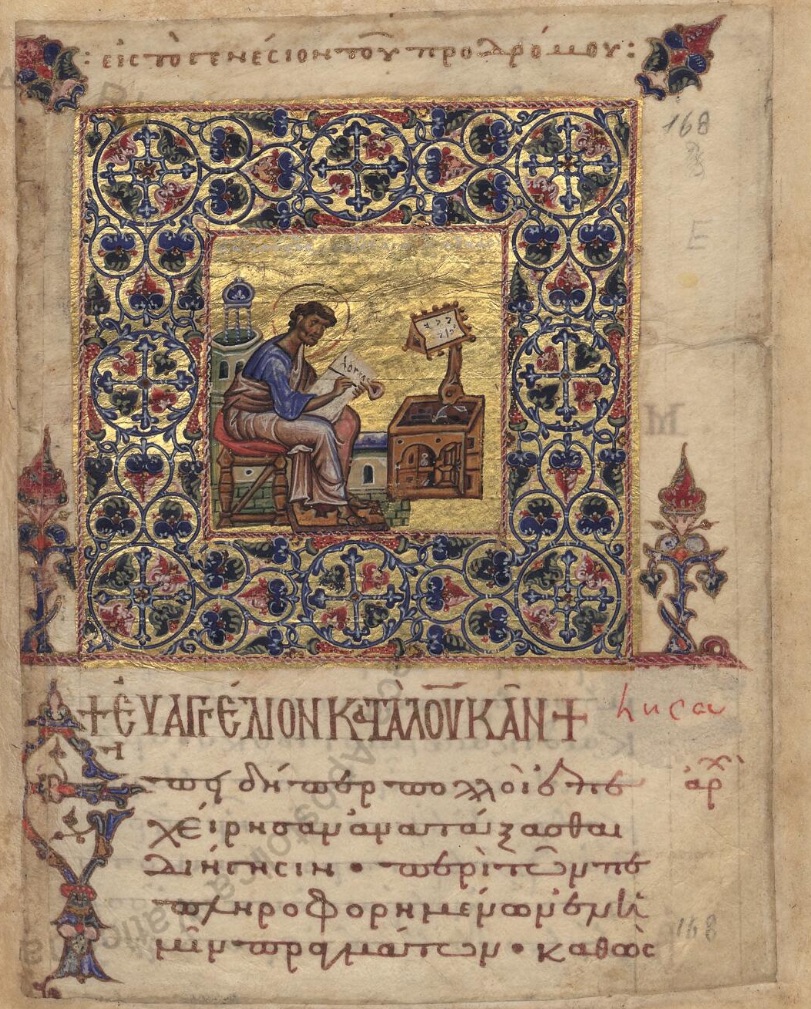 Portrait of the Evangelist Luke
Portrait of the Evangelist Luke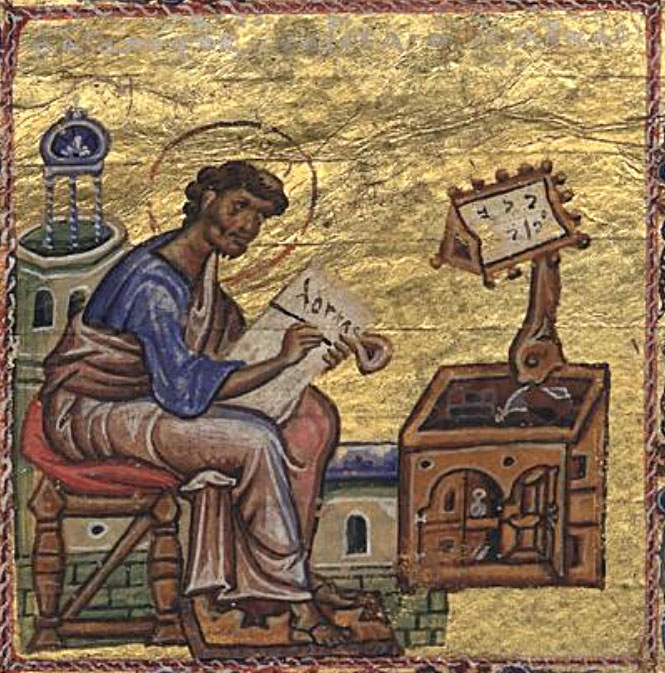
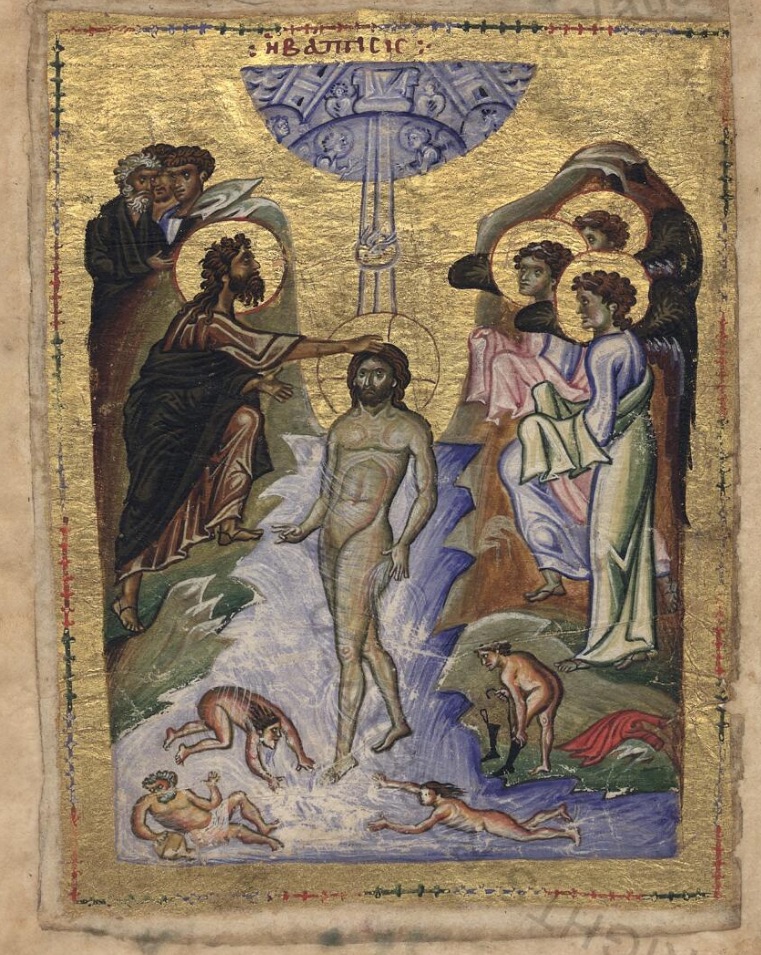 The Baptism of Christ by John the Baptist
The Baptism of Christ by John the Baptist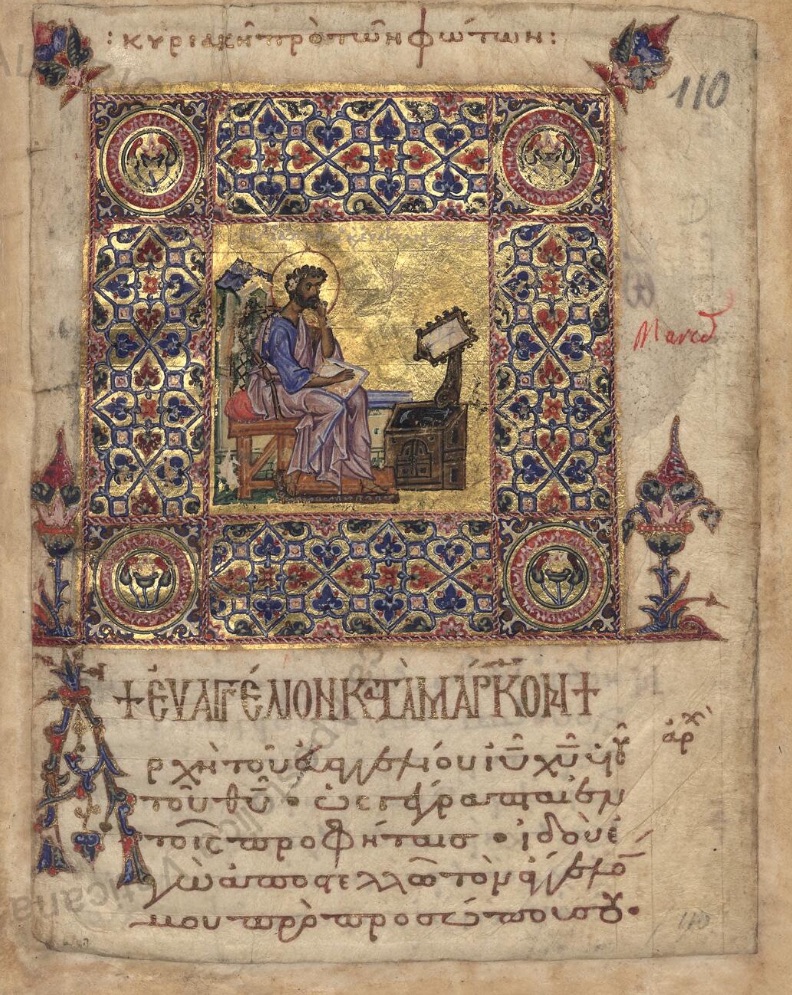 Portrait of the Evangelist Mark
Portrait of the Evangelist Mark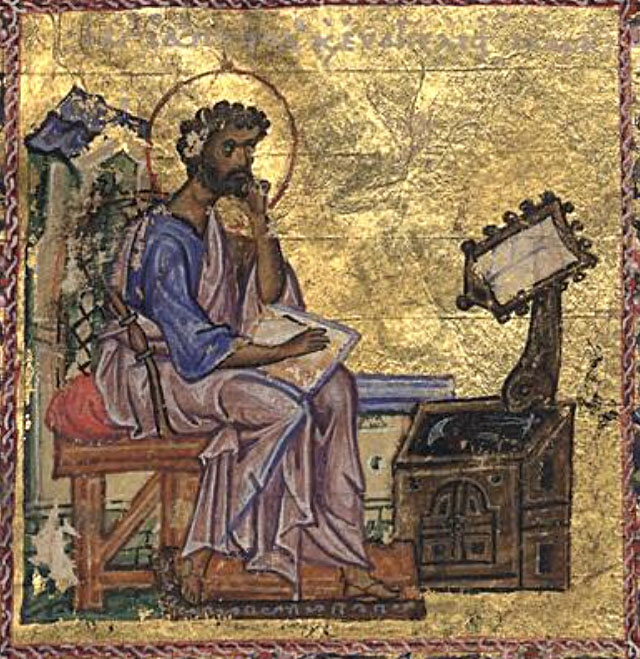
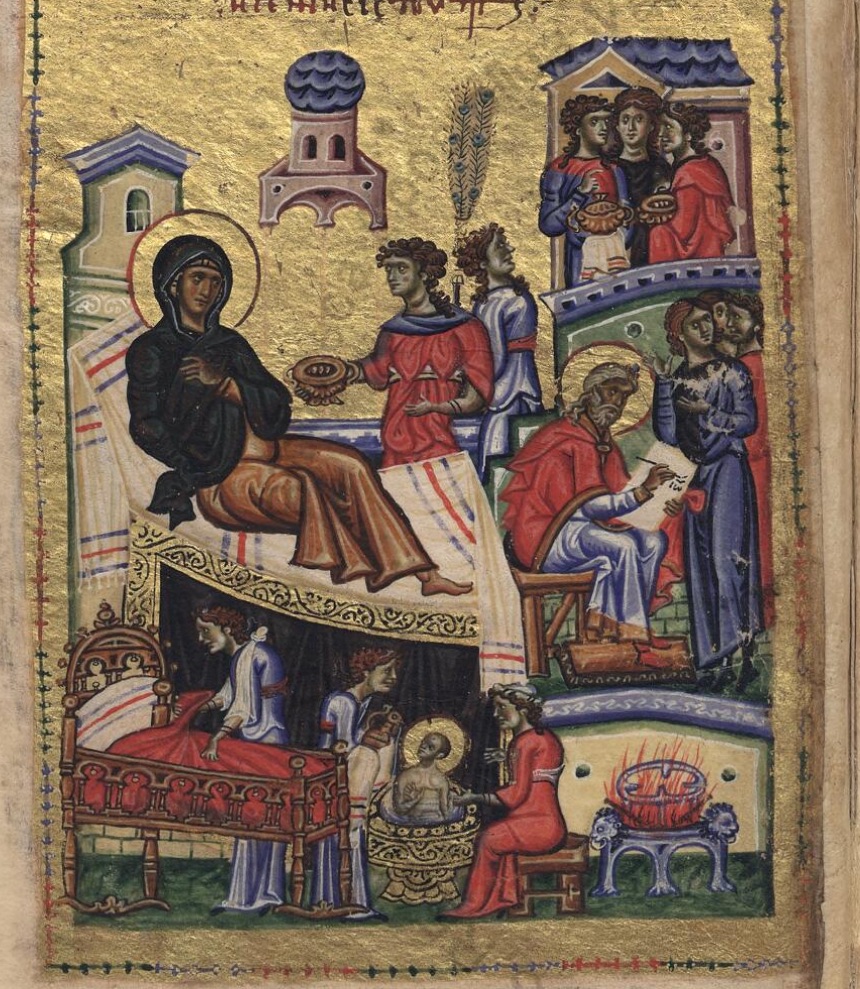 The Nativity of John the Baptist
The Nativity of John the Baptist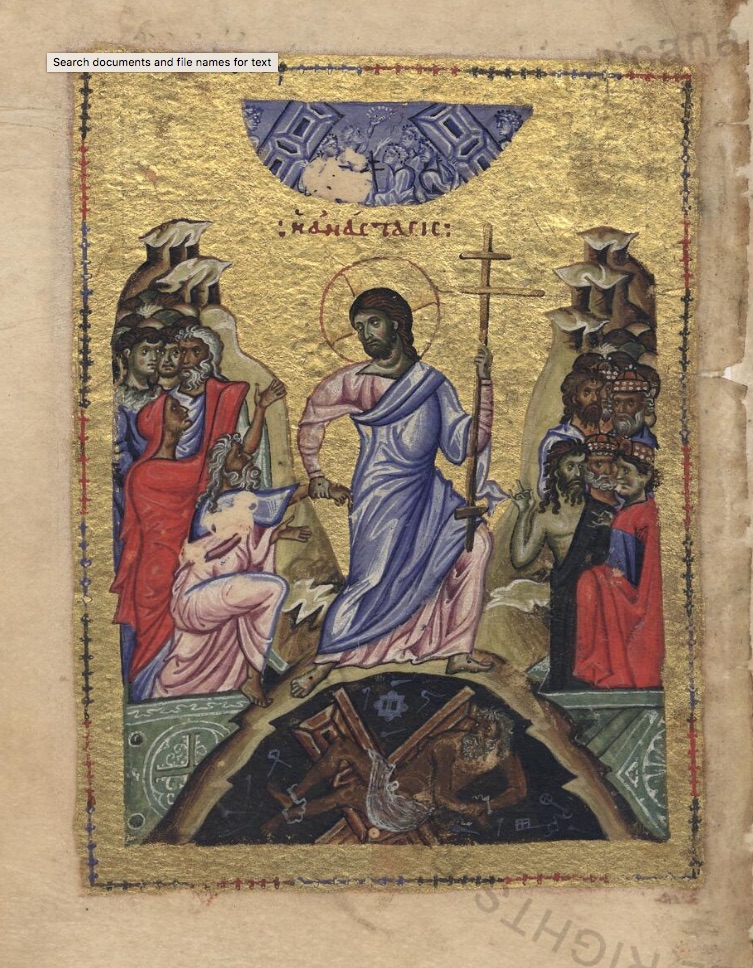 The Anastasis
The Anastasis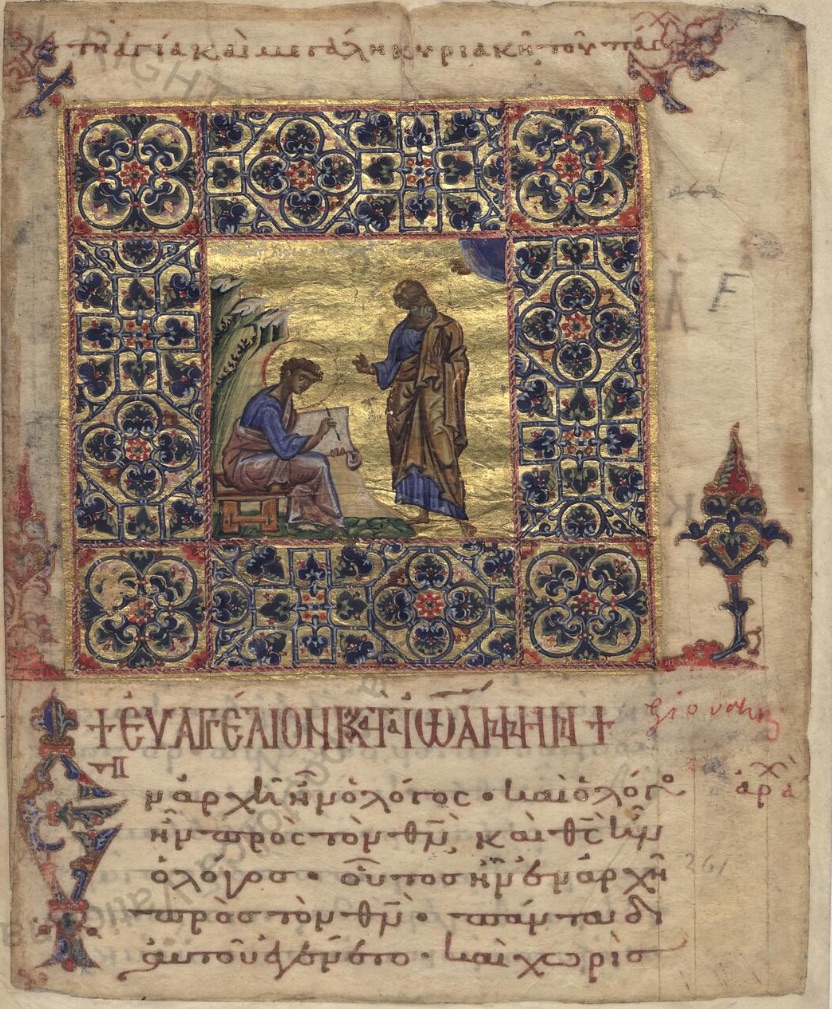 Portrait of Evangelist John
Portrait of Evangelist John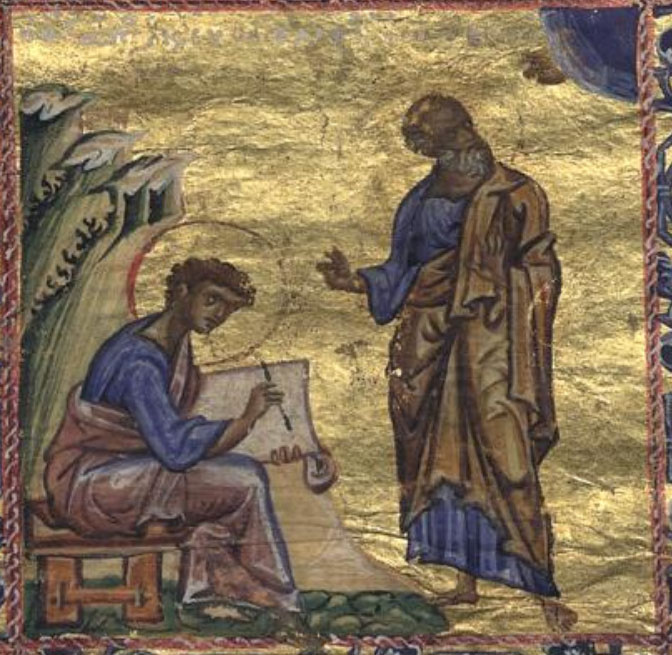
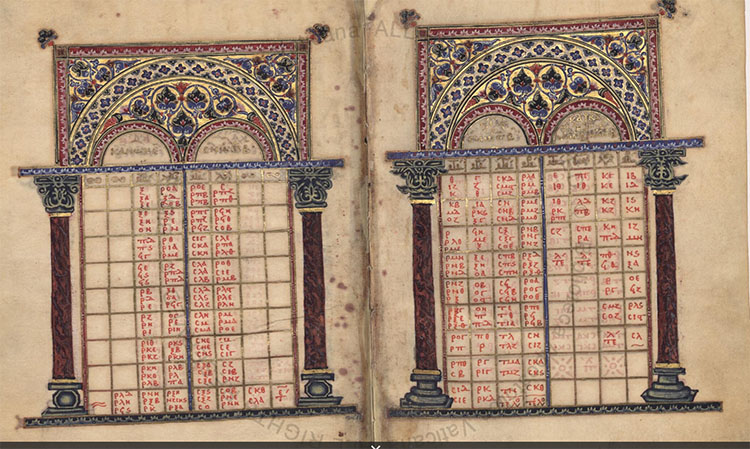 Pair of Canon Tables
Pair of Canon Tables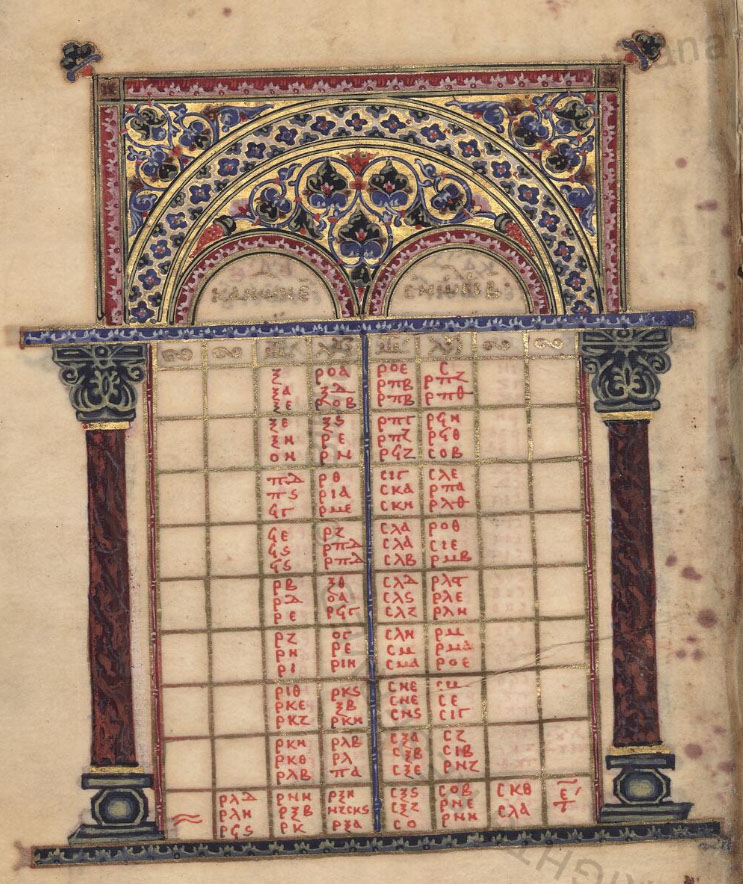 Canon Table
Canon Table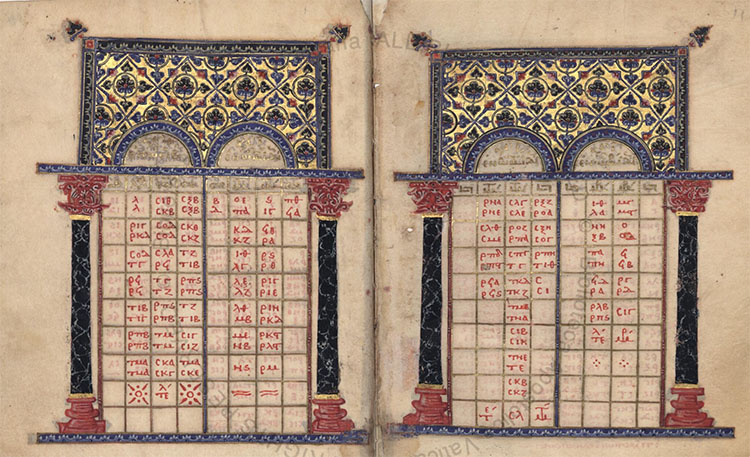 Pair of Canon Tables
Pair of Canon Tables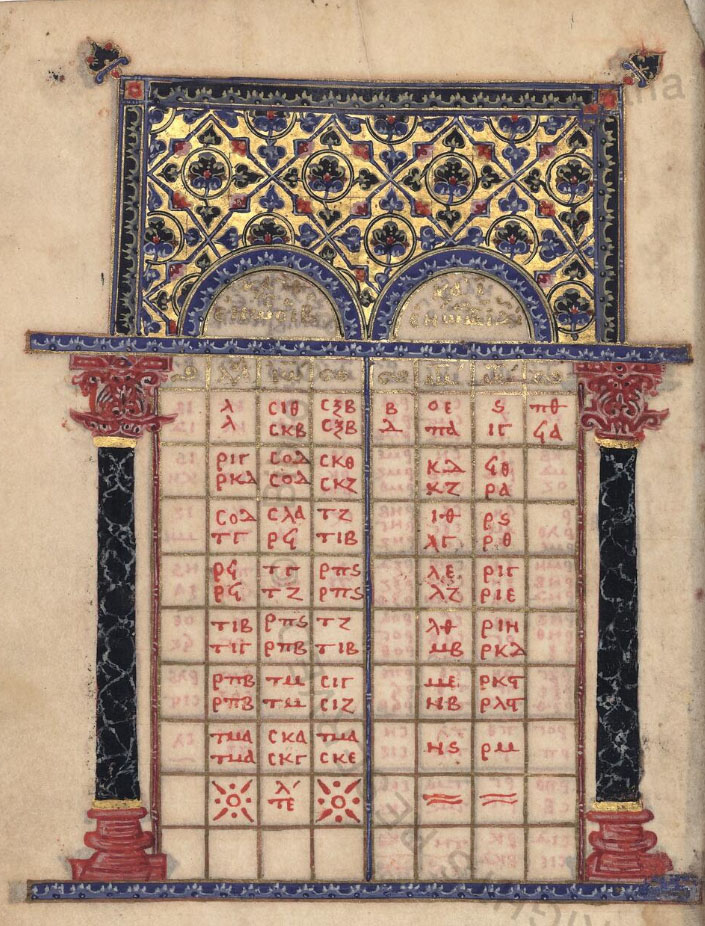 Canon Table
Canon Table












